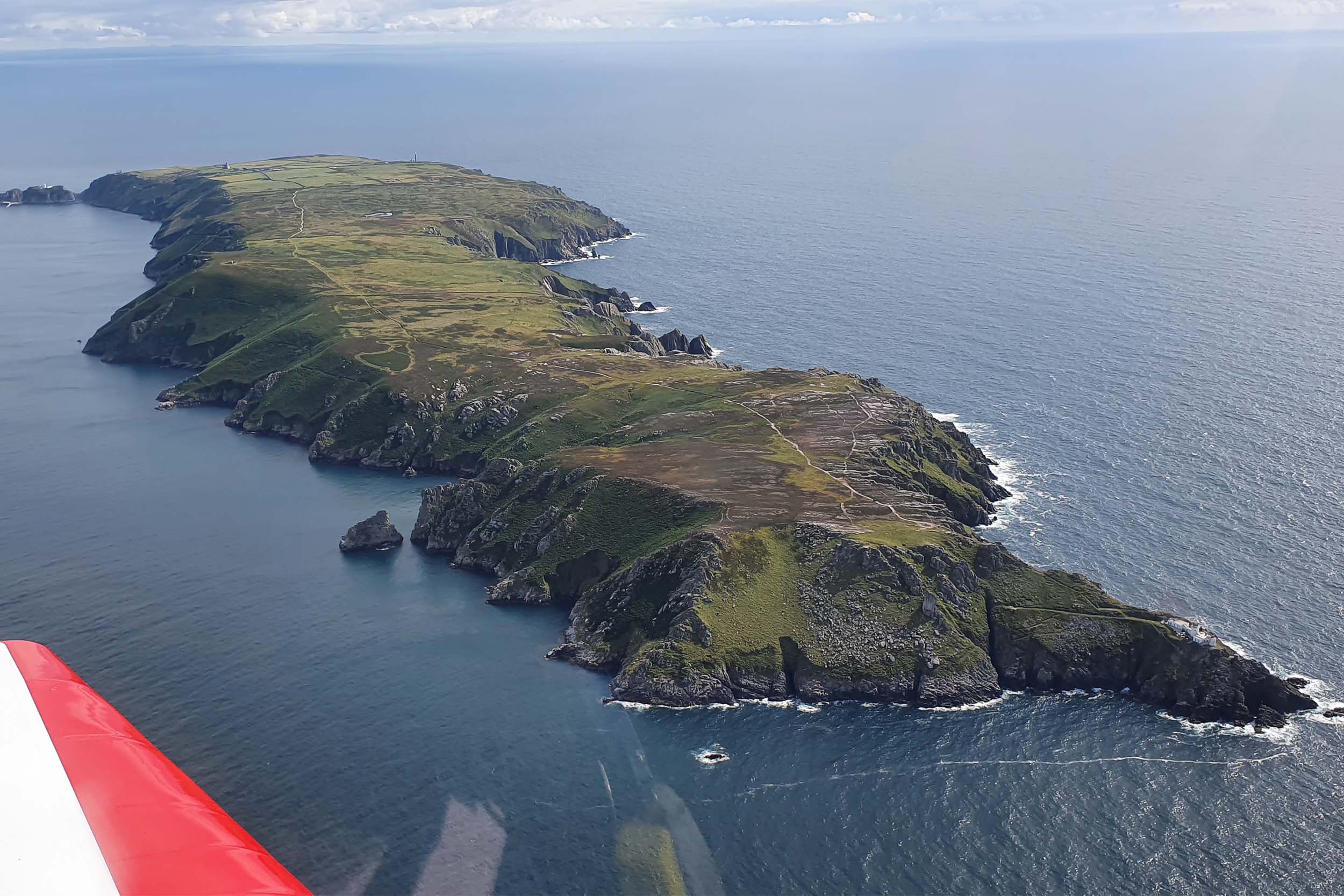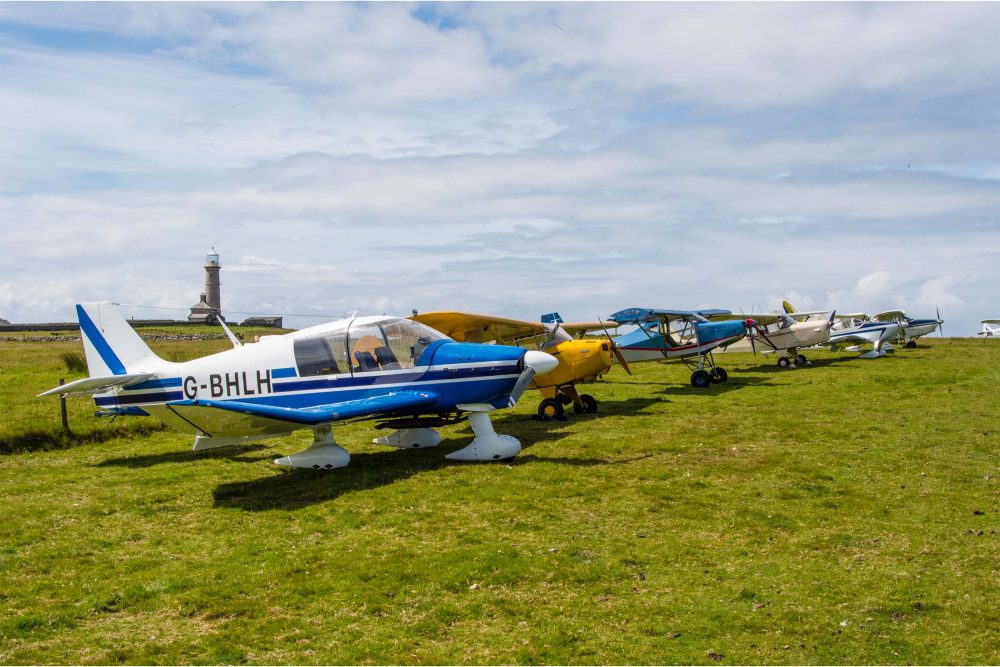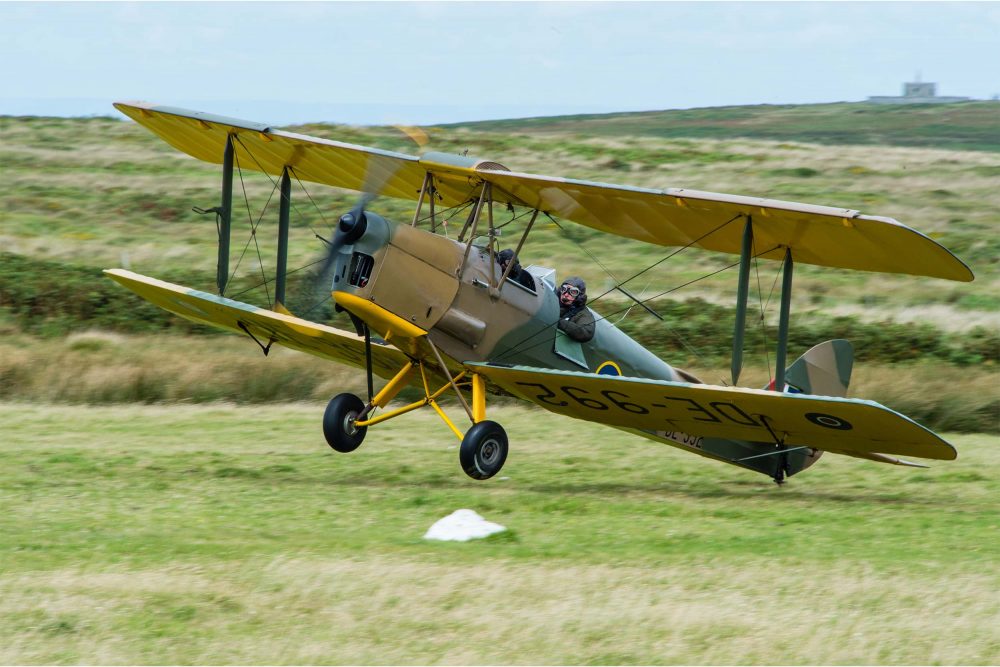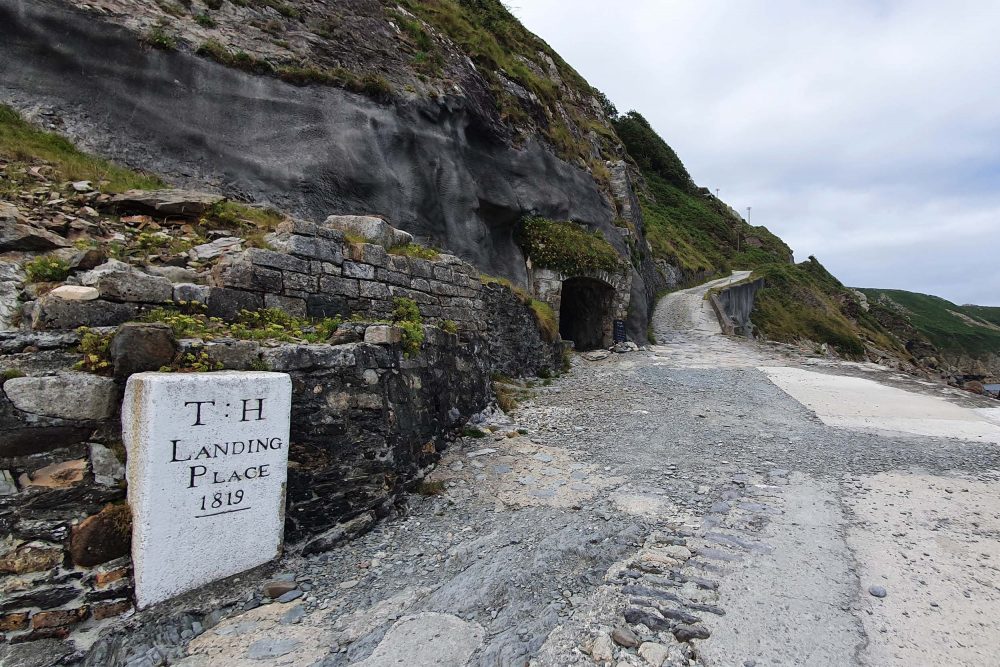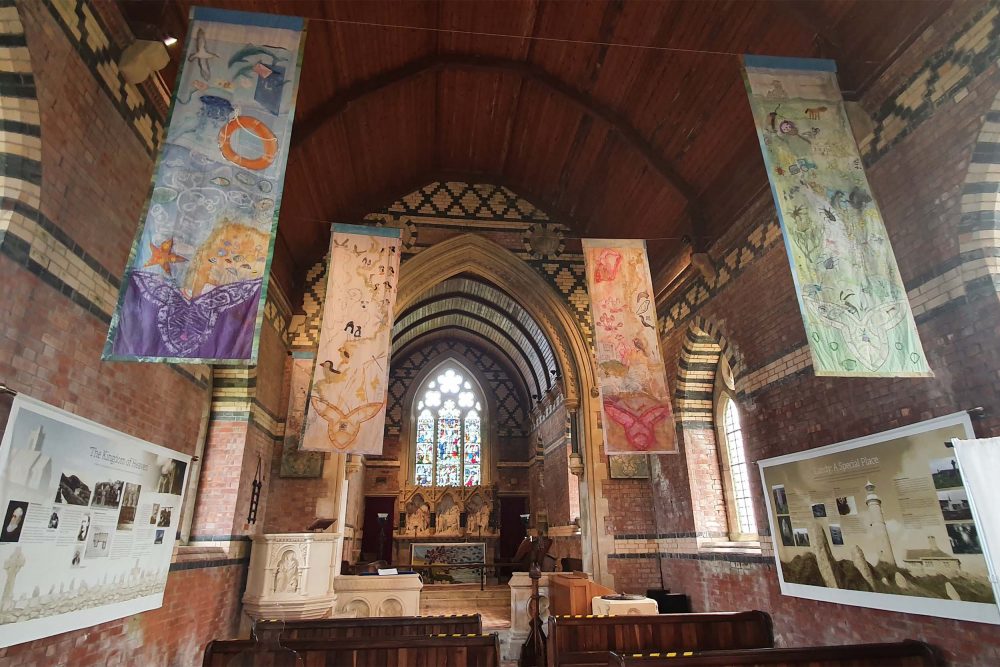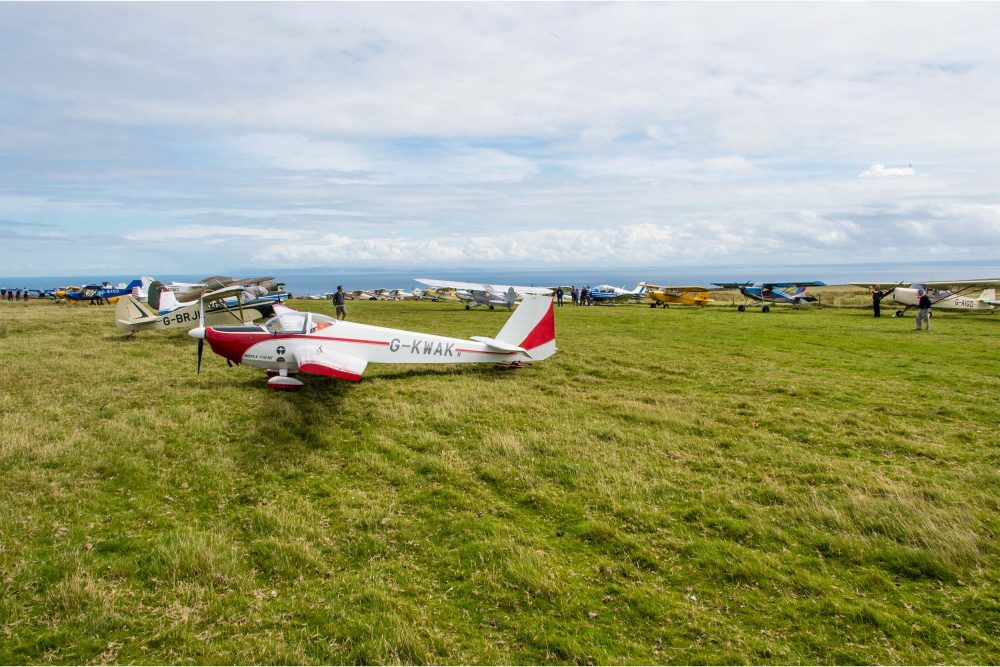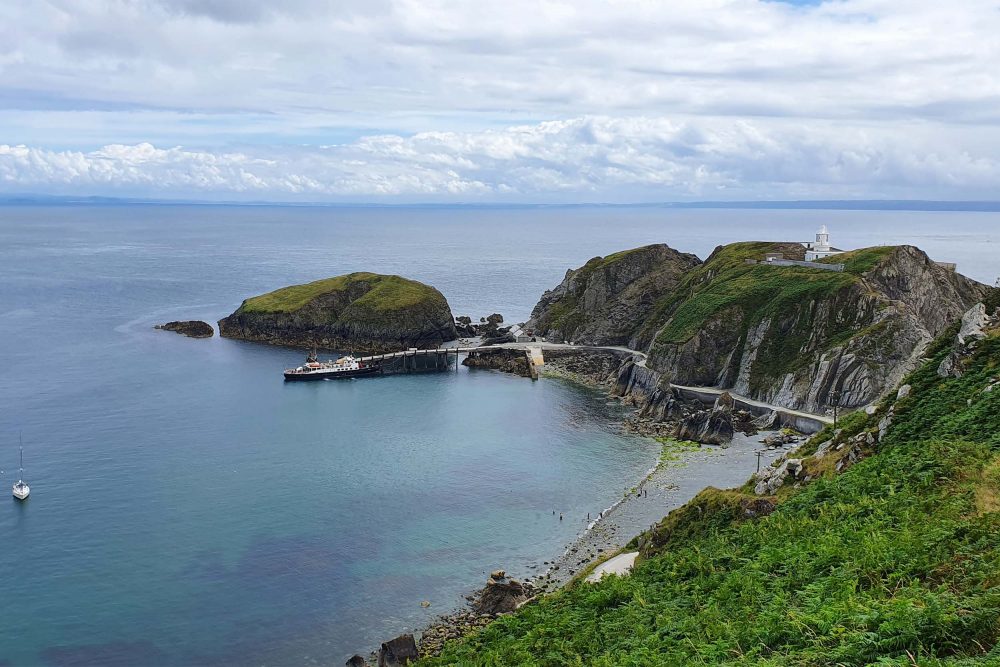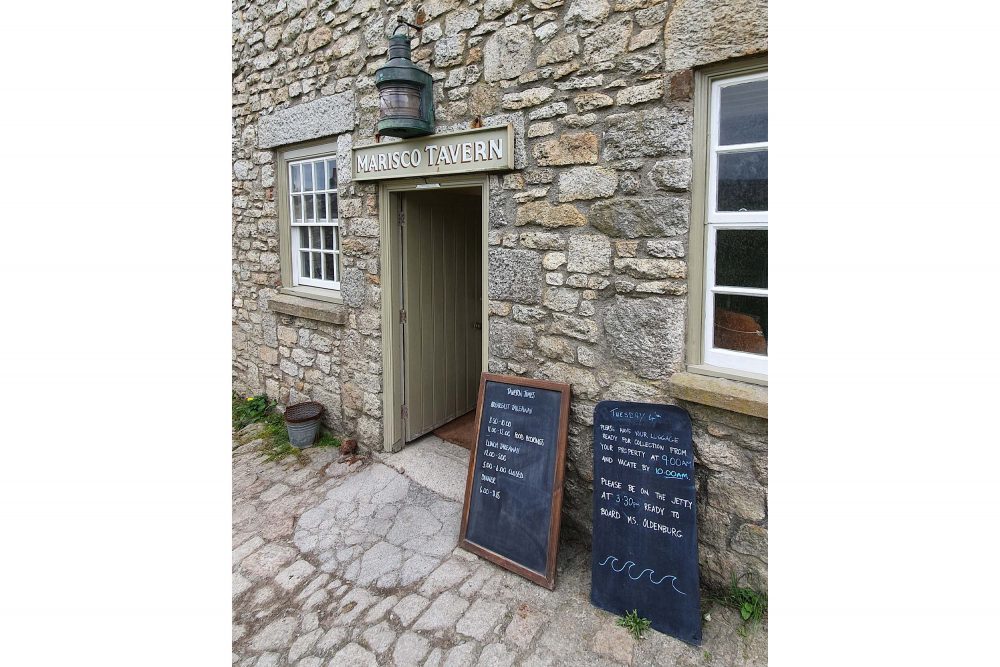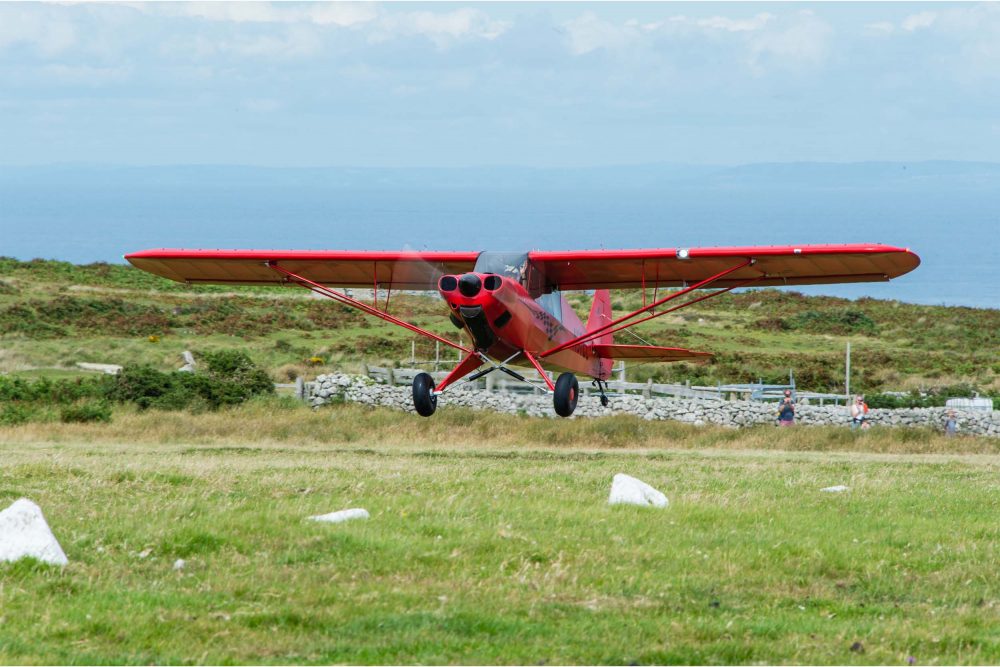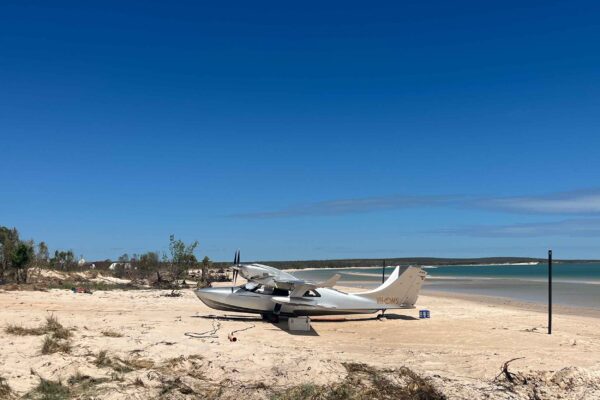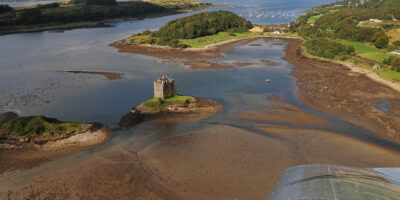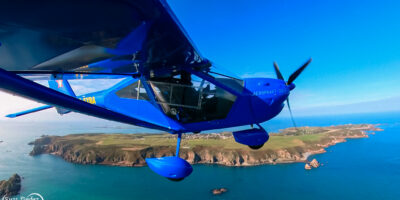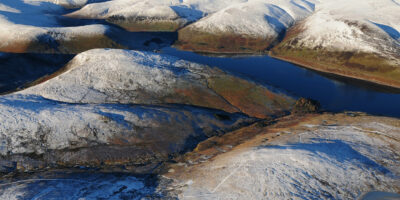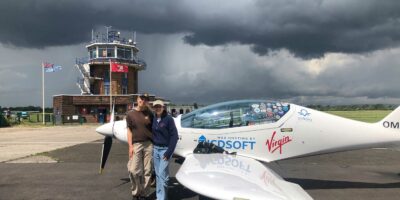After booking in and paying a very reasonable landing fee (which included visitors’ contribution to the Landmark Trust), we watched a few arrivals. In total 80 aircraft flew to Lundy, including over 30 vintage types. As FLYER’s bossman, Ian Seager, pointed out, as probably the best-attended UK one-day GA event in 2020, it might be worthy of the name ‘LunkOsh’.
One of the arrivals after us was a red Carbon Cub, built and flown by Mark Albery, a FLYER Forumite, and recently repatriated from California. My passenger Mark had last met Mark A and his Carbon Cub a year ago when they had bumped into each other at AirVenture. So, from Oshkosh to LunkOsh – who’d have thought?
Some exploration beckoned while we were here, so we headed for the Marisco Tavern, the island’s only pub, which is no distance at all from the strip. It does a mean lamb burger, after which we walked the short distance to St Helen’s Church, which dates to 1880, passing a blue postbox on the way. It is blue because the GPO pulled out of Lundy in the 1920s and Lundy Post is now run out of the island store. It claims to be the oldest private postal service in the world, and produces highly collectible ‘puffin’ stamps and franks.


